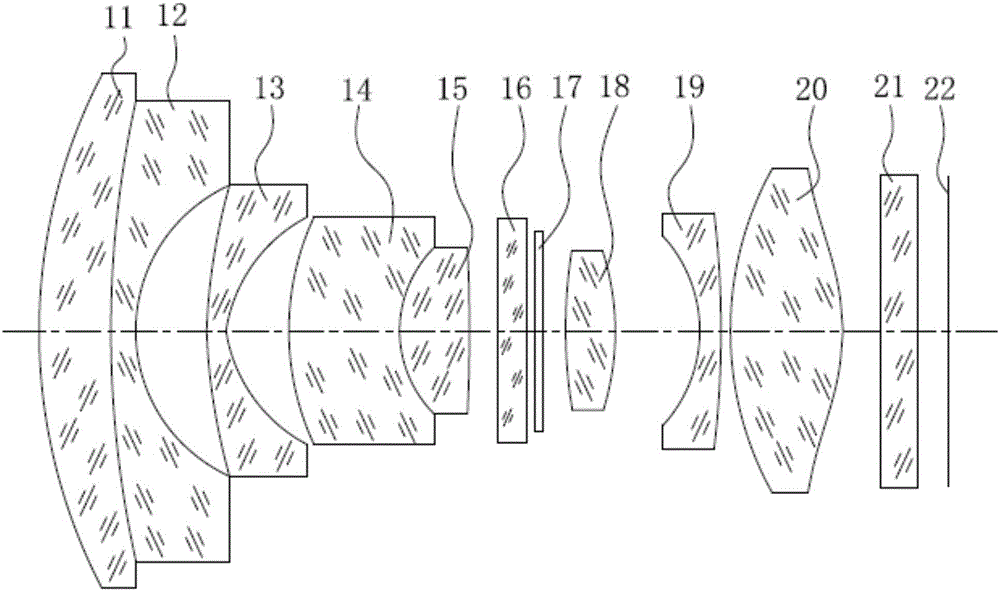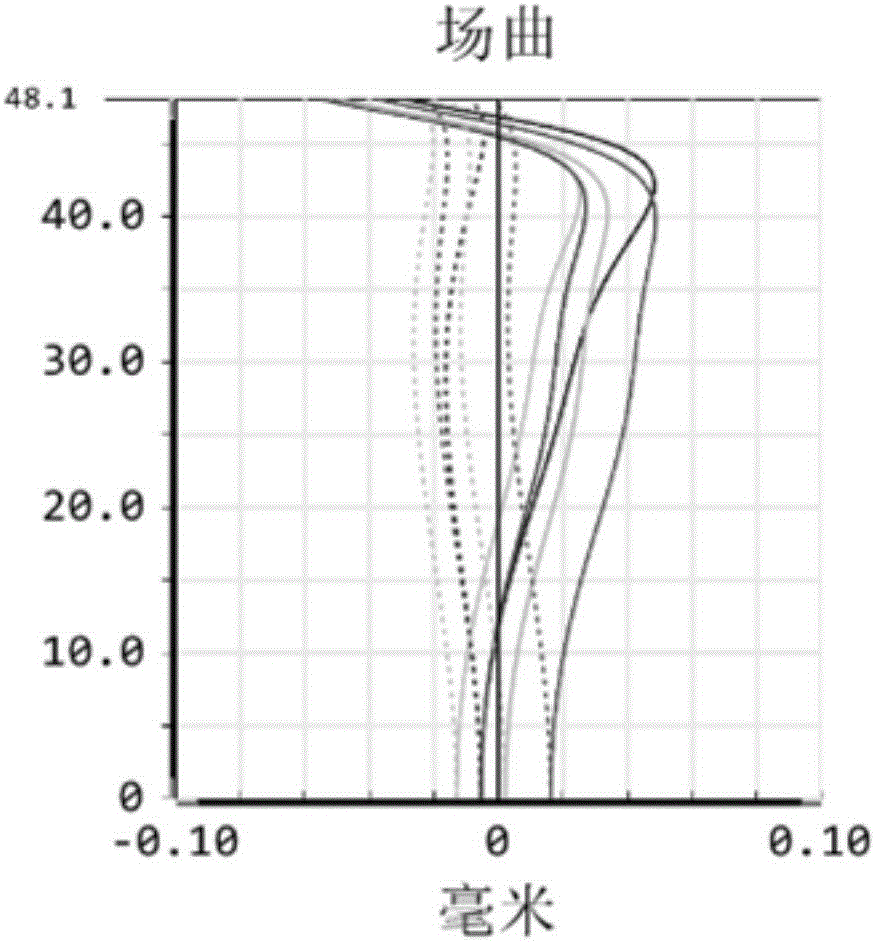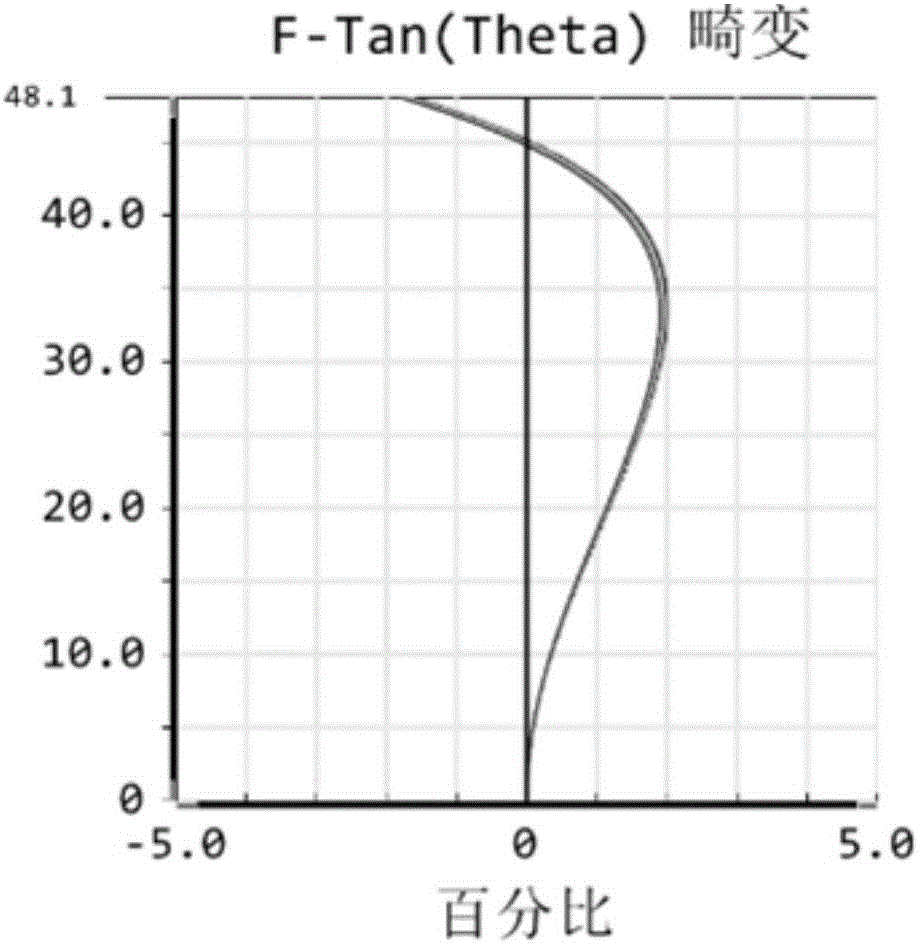Unmanned aerial vehicle camera lens
A camera lens and UAV technology, applied in the field of lens, can solve the problems that affect the imaging quality of the camera lens of the drone, the camera lens cannot adapt to the temperature environment, and the temperature has a great influence on the camera lens, so as to ensure the quality of resolution, high Quality Resolution, Lightweight Effects
- Summary
- Abstract
- Description
- Claims
- Application Information
AI Technical Summary
Problems solved by technology
Method used
Image
Examples
Embodiment 1
[0063] see Figure 1a , which is a schematic diagram of the cross-sectional structure of the UAV camera lens in the first embodiment of the present invention, which includes a first lens 11 with positive refractive power and a second lens 12 with negative refractive power in sequence from the object side to the imaging surface , a third lens 13 with negative power, a fourth lens 14 with negative power, a fifth lens 15 with positive power, an optical filter 16, an aperture 17, a sixth lens with positive power 18. A seventh lens 19 with negative refractive power, an eighth lens 20 with positive refractive power, a cover glass 21 and an imaging surface 22 . Wherein, the optical centers of each lens are located on the same straight line, and all the lenses of the drone camera lens are coated with a high transmittance multilayer film.
[0064] Specifically, the first lens 11 is a meniscus-shaped glass spherical lens with a concave surface facing the imaging surface, and the second ...
Embodiment 2
[0108] see Figure 2a , which is a schematic cross-sectional structure diagram of the UAV camera lens in the second embodiment of the present invention, the UAV camera lens in this embodiment is roughly the same as the UAV camera lens in the first embodiment, the difference The reason is that there are differences between the relevant parameters of the lenses of the camera lens of the drone in this embodiment and the parameters of the lenses of the camera lens of the drone in the first embodiment.
[0109] Please refer to Table 3, which shows the relevant parameters of each lens of the drone camera lens in this embodiment.
[0110] table 3:
[0111]
[0112]
[0113] Please refer to Table 4, which shows the relevant parameters of the aspheric surface of the camera lens of the drone in the present embodiment.
[0114] Table 4:
[0115]
[0116] see Figure 2b , shown as the field curvature curve of the drone camera lens in this embodiment, please refer to Figure ...
Embodiment 3
[0118] see Figure 3a , which is a schematic cross-sectional structure diagram of the UAV camera lens in the third embodiment of the present invention, the UAV camera lens in this embodiment is roughly the same as the UAV camera lens in the first embodiment, the difference That is, the UAV camera lens in this embodiment is based on the first embodiment, the first lens 11 and the second lens 12 are separated independently, and the two are used separately instead of being combined into a cemented lens, At the same time, there are differences in the relevant parameters of the lenses of the camera lens of the drone in this implementation and the parameters of the lenses of the camera lens of the drone in the first embodiment.
[0119] Please refer to Table 5, which shows the relevant parameters of each lens of the drone camera lens in this embodiment.
[0120] table 5:
[0121]
[0122]
[0123] Please refer to Table 6, which shows the relevant parameters of the aspheric s...
PUM
 Login to View More
Login to View More Abstract
Description
Claims
Application Information
 Login to View More
Login to View More - R&D
- Intellectual Property
- Life Sciences
- Materials
- Tech Scout
- Unparalleled Data Quality
- Higher Quality Content
- 60% Fewer Hallucinations
Browse by: Latest US Patents, China's latest patents, Technical Efficacy Thesaurus, Application Domain, Technology Topic, Popular Technical Reports.
© 2025 PatSnap. All rights reserved.Legal|Privacy policy|Modern Slavery Act Transparency Statement|Sitemap|About US| Contact US: help@patsnap.com



